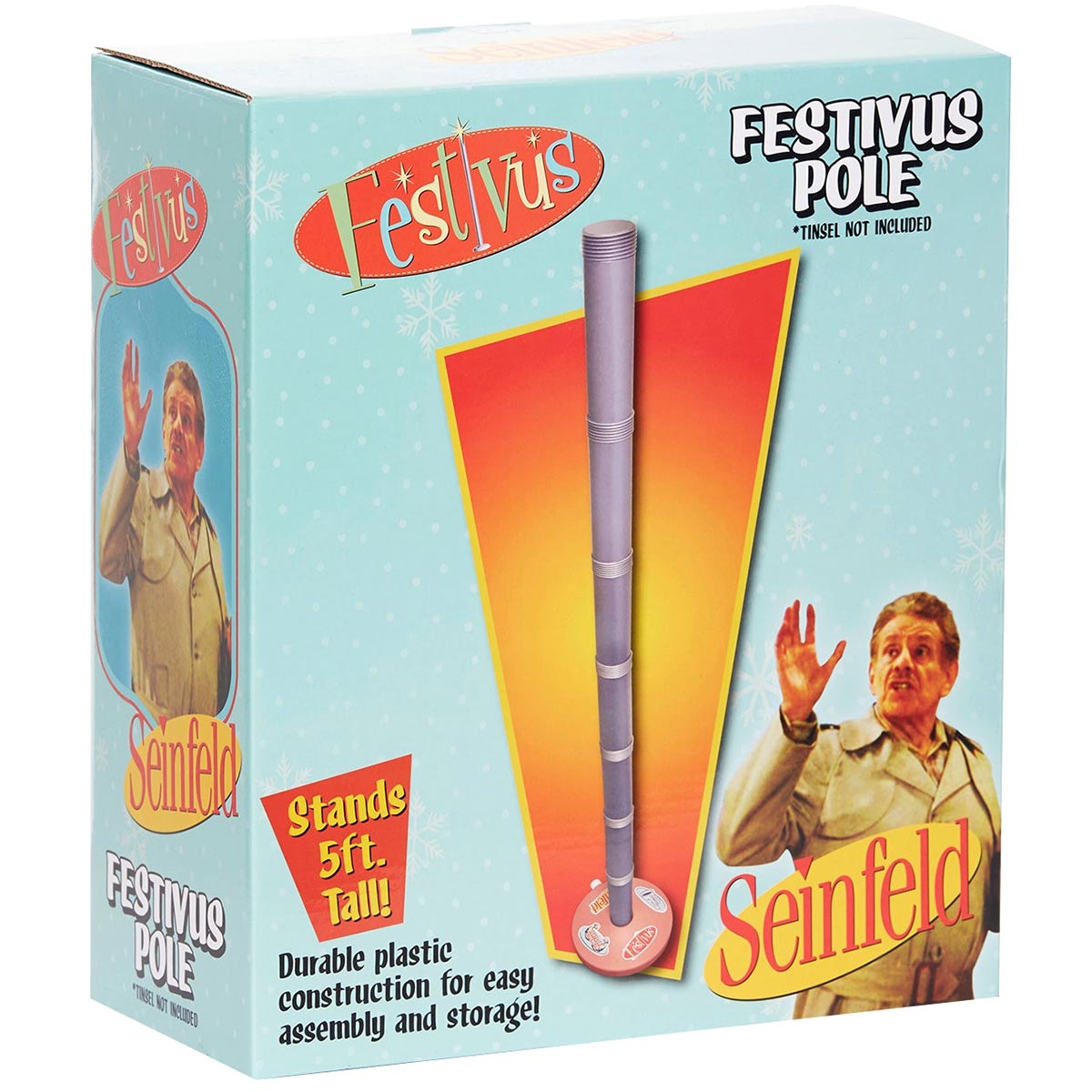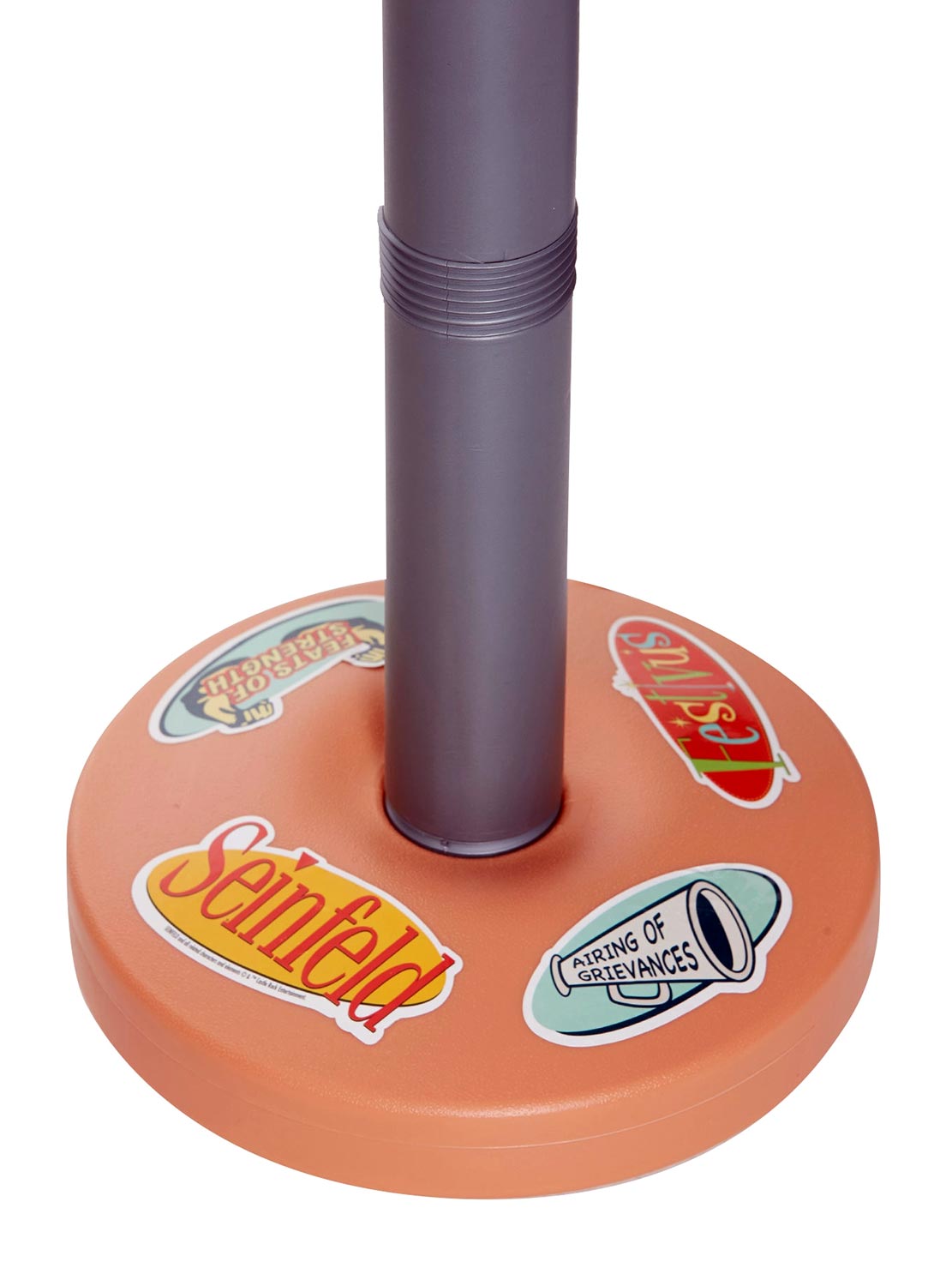The Festivus Pole: A Symbol For The Rest Of Us
Have you ever felt the weight of holiday expectations, the relentless push of commercialism, or the pressure to be perfectly jolly when, really, you just want a break? For many, the traditional winter holidays can feel a bit much, you know? It's almost as if everyone is trying too hard, and the true spirit of connection gets lost in all the tinsel and sales. This feeling, this quiet yearning for something simpler, something more real, something a little less polished, is exactly what gave birth to a truly unique and rather refreshing celebration: Festivus.
This secular holiday, celebrated each year on December 23rd, offers a delightful alternative to the usual festive frenzy. It's a day to step back, to breathe, and to embrace a different kind of cheer, one that doesn't rely on shiny decorations or endless gift lists. Festivus, in a way, provides a much-needed counterpoint to the perceived pressures that can sometimes overshadow the Christmas season, allowing people to find joy in a less conventional manner.
And at the very heart of this wonderfully quirky tradition stands its most recognizable, and arguably most important, emblem: the Festivus pole. This isn't just any pole; it's a statement, a symbol of irreverence, and a focal point for all the holiday's unusual customs. So, if you've ever wondered about this fascinating, unadorned aluminum fixture, you're in for a treat, as we explore its origins and why it holds such a special place in the hearts of those who celebrate Festivus.
- How Did Technoblade Die
- Short African American Styles
- Are Dreka And Kevin Still Together
- Street Outlaws Okc Cast
- Tom Hanks Net Worth 2023
Table of Contents
- The Story Behind Festivus: A Holiday for the Rest of Us
- The Iconic Festivus Pole: Unadorned and Unforgettable
- Beyond the Pole: Other Festivus Traditions
- Festivus Today: More Than Just a TV Gag
- Frequently Asked Questions About the Festivus Pole
The Story Behind Festivus: A Holiday for the Rest of Us
Festivus, that wacky holiday popularized in a 1997 "Seinfeld" episode, has a rather fascinating backstory, as a matter of fact. Billed as "Festivus for the rest of us," this annual December 23rd celebration was brought to the masses by the Costanza clan, specifically George Costanza's father, Frank. He, played by the late, great Jerry Stiller, created this twisted celebration as an alternative to the usual Christmas festivities. It’s a holiday that, quite honestly, makes you chuckle just thinking about it, and it really sticks with you.
Frank Costanza's Brainchild
Frank Costanza, a character known for his fiery personality and unusual ideas, invented Festivus. He created it as a way to push back against the commercialism and perceived pressures he felt during the traditional holiday season. It was, in his mind, a much-needed escape from the tinsel and the endless jingle bells. This holiday, with its unique set of rules and rituals, provided an outlet for Frank's particular brand of frustration and, in a way, offered a more honest, if slightly unhinged, way to celebrate. You know, it was truly his own thing.
From Real Life to Seinfeld Stardom
While Frank Costanza brought Festivus to the small screen, the holiday itself actually began decades before that. It had roots in the 1960s, believe it or not. The "Seinfeld" episode titled "The Strike" in 1997 is what truly catapulted Festivus into popular culture. In that episode, Frank Costanza explains the traditions of Festivus, which he had invented. This television appearance made the holiday, with its peculiar customs like the Festivus pole, the airing of grievances, and feats of strength, a unique and much-loved celebration for millions, giving it a sort of cult status, you could say.
- White Middle Aged Man
- Uap Old Mutual Tower
- Real Madrid Away Kit
- Ed And Lorraine Warren Museum
- 90 Day Fianc%C3%A9 The Other Way Cast
The Iconic Festivus Pole: Unadorned and Unforgettable
When you think of Festivus, one image likely comes to mind almost immediately: the Festivus pole. This isn't your typical sparkly holiday decoration; far from it. It stands as a stark contrast to the over-the-top displays of other holidays, making it instantly memorable. It’s a rather simple object, yet its presence speaks volumes about the spirit of Festivus. It truly embodies the dry humor and irreverence that defines the holiday, giving it a certain charm.
What Makes a Festivus Pole Special?
What sets the Festivus pole apart is its absolute lack of ornamentation. It is, quite simply, an unadorned aluminum pole. There are no garlands, no lights, no baubles, nothing at all to distract from its bare essence. This deliberate plainness is a central tenet of Festivus, a direct rebellion against the commercial glitz that often defines other holiday seasons. Its beauty, if you can call it that, comes from its stark simplicity and its powerful message of stripping away the unnecessary. It's just a little different, isn't it?
Why an Aluminum Pole?
The choice of an aluminum pole isn't random; it's a very specific detail that adds to the holiday's unique charm. Frank Costanza explained that aluminum enjoys a very high strength-to-weight ratio. This technical detail, delivered with Frank's characteristic deadpan seriousness, adds another layer of absurdity and dry humor to the holiday. The material itself is strong and durable, much like the resolve of those who choose to celebrate Festivus. It’s a bit of a clever nod to practicality, in a way, while also being completely silly.
Finding or Making Your Own Pole
Preparing for Festivus often involves getting your Festivus pole ready. For some, this means searching their home for an aluminum pole, perhaps from a crawl space, or finding one at a hardware store. The beauty is that it doesn't need to be fancy or expensive. It just needs to be, well, a pole. If you're feeling crafty, you can even make a simple Festivus pole yourself, as many people have shown how to do. The key is its unadorned nature, so no need for elaborate crafting skills, just a basic pole. It's really quite straightforward, you know?
Beyond the Pole: Other Festivus Traditions
The Festivus pole might be the holiday's most visible symbol, but it's just one piece of the larger Festivus celebration. This holiday, after all, involves a whole host of quirky traditions that make it truly unforgettable. These rituals, performed around the iconic pole, are what give Festivus its distinctive character and provide a truly unique way to engage with the holiday spirit. They are, in fact, what make it "Festivus for the rest of us."
The Airing of Grievances
Perhaps the most famous, and certainly the most cathartic, Festivus tradition is the Airing of Grievances. This takes place during the Festivus dinner, right before the meal is served. Each participant gets a chance to tell others how they have disappointed them over the past year. It's a moment to let out all those pent-up frustrations and annoyances, rather than keeping them bottled up. This tradition, while seemingly confrontational, is meant to be a humorous and honest way to clear the air, you see. It's perfect for airing grievances, as the text mentions, and it's quite a spectacle.
The Feats of Strength
After the grievances have been aired, the celebration culminates with the Feats of Strength. This is the final tradition of Festivus, and it involves the head of the household challenging another person to a wrestling match. Festivus isn't over until the head of the household is pinned. This physical challenge adds a layer of absurdity and, frankly, a lot of fun to the holiday. It's a way to demonstrate physical prowess and, quite honestly, to ensure everyone leaves with a memorable story. So, grab that aluminum pole and start flexing your muscles, as the saying goes.
Festivus Miracles
While not an official "tradition" in the same vein as the grievances or feats, the concept of "Festivus miracles" also plays a role. These are usually unexpected, often slightly inconvenient, and sometimes even frustrating occurrences that happen during the Festivus celebration. They're not true miracles in the traditional sense, but rather a humorous acknowledgment of life's little absurdities. It’s a bit like finding humor in unexpected situations, which, in a way, is what Festivus is all about.
Festivus Today: More Than Just a TV Gag
What started as a hilarious "Seinfeld" holiday has truly taken on a life of its own. Festivus is no longer just a punchline from a classic sitcom; it has become a genuine, albeit unconventional, annual celebration for many people around the world. Its quirky traditions, particularly the Festivus pole, have resonated with those looking for something different, something that speaks to their own experiences of holiday pressures. It’s amazing, really, how a television show can spark such a lasting phenomenon.
Pop Culture Impact and Meme Culture
The enduring popularity of Festivus has cemented its place in pop culture. References to the Festivus pole, the airing of grievances, and feats of strength are common, especially around December 23rd. The holiday has even spawned its own meme culture, with countless online jokes and images celebrating its unique charm. This widespread recognition shows just how deeply Festivus has embedded itself into the collective consciousness, proving it’s far more than a fleeting trend. It’s almost a cultural touchstone, you might say.
Celebrating Festivus in the Modern Age
Today, people celebrate Festivus in various ways, often incorporating its core elements while adding their own modern twists. You can find Festivus desktop poles, talking Festivus poles, and even greeting card sets featuring the iconic symbol. Some communities and organizations have embraced the holiday, too. For instance, there was a notable initiative where, for every photo posted to a platform of a user's Festivus pole, an account promised to plant a tree. This effort reportedly saved over 5,000 trees, which is a rather wonderful modern twist on a holiday that began with a bare aluminum pole. It shows how a simple idea can grow and adapt, really, inspiring new ways to engage. Learn more about Festivus and its history.
Frequently Asked Questions About the Festivus Pole
Many people have questions about this unique holiday symbol. Here are some common inquiries about the Festivus pole, helping to clear up any lingering curiosities you might have about it, you know.
What is a Festivus pole?
A Festivus pole is a simple, unadorned aluminum pole that serves as the central decoration for the Festivus holiday. It stands in stark contrast to the typically decorated Christmas trees, symbolizing the holiday's rejection of commercialism and excessive ornamentation. Its bareness is part of its charm and message, really.
Why is the Festivus pole made of aluminum?
According to Frank Costanza, the creator of Festivus, the pole is made of aluminum because it has a "very high strength-to-weight ratio." This detail adds to the holiday's dry humor and irreverence, giving a seemingly practical, yet ultimately silly, reason for its material. It’s just a bit of a funny detail, isn’t it?
Do you decorate a Festivus pole?
No, a Festivus pole is traditionally left completely unadorned. The absence of decorations is a key aspect of its meaning, symbolizing a move away from the perceived pressures and commercialism of other holidays. The whole point is its bare simplicity, you see.
Learn more about Festivus on our site, and discover other holiday traditions on this page .

Seinfeld Festivus Pole - GeekAlerts

Seinfeld Festivus Pole - GeekAlerts

Seinfeld Festivus Pole - GeekAlerts